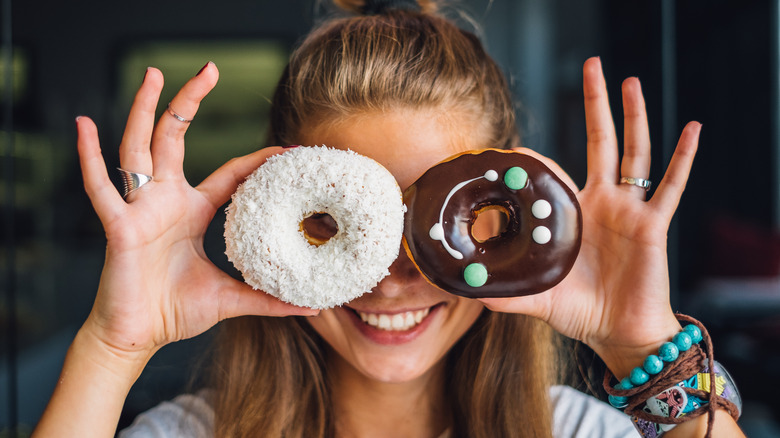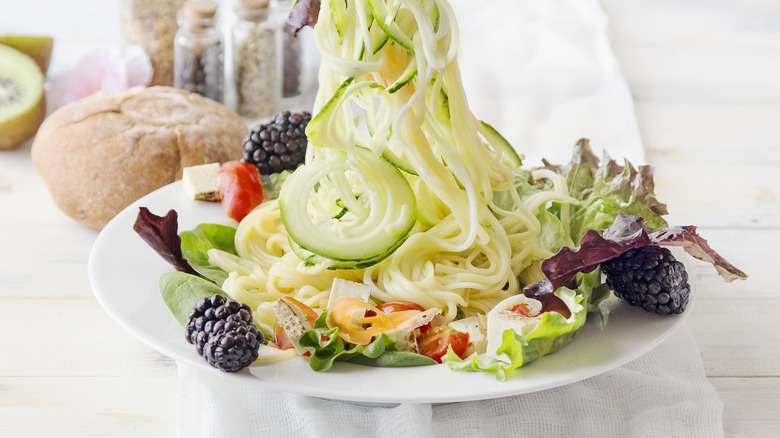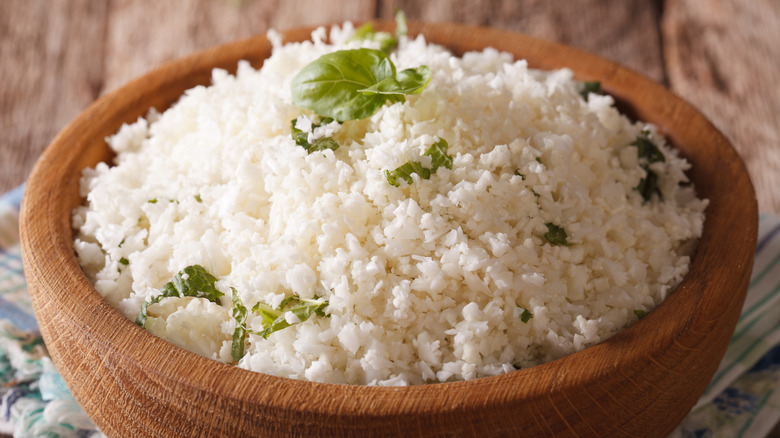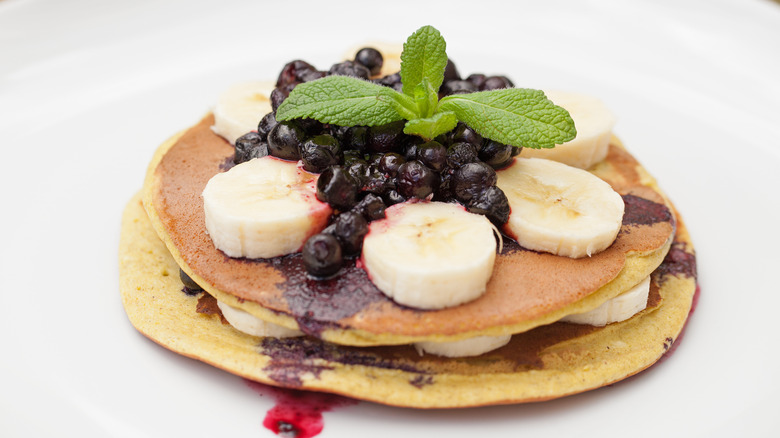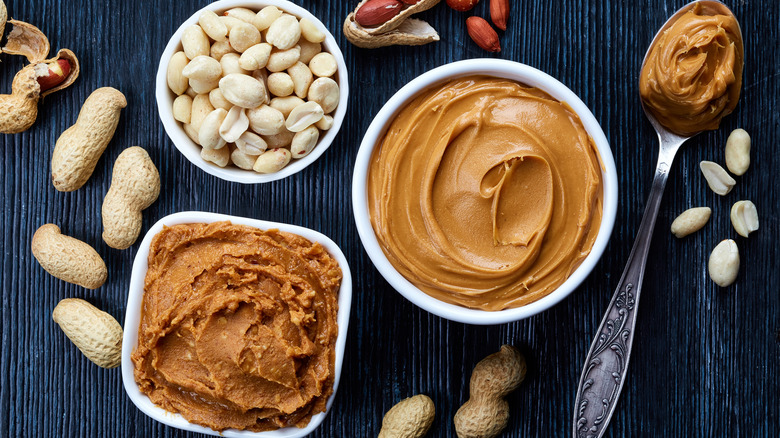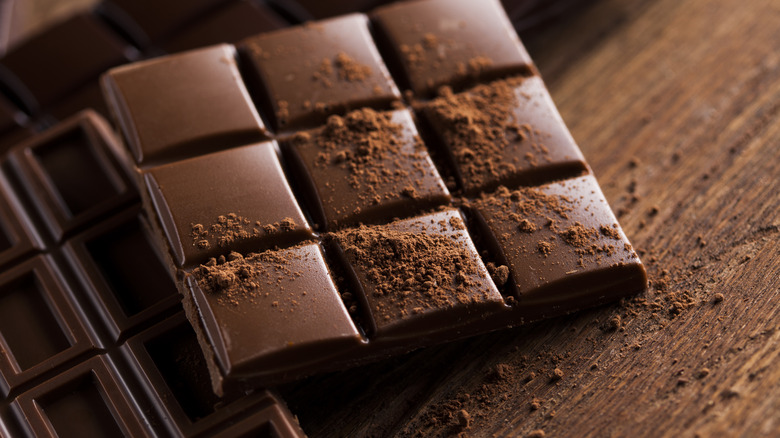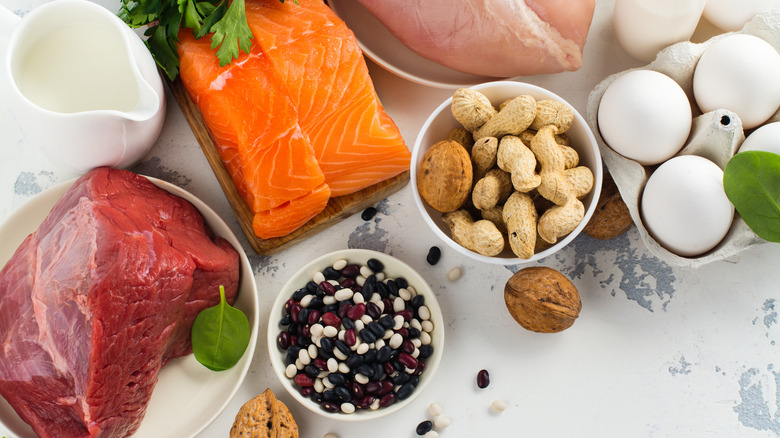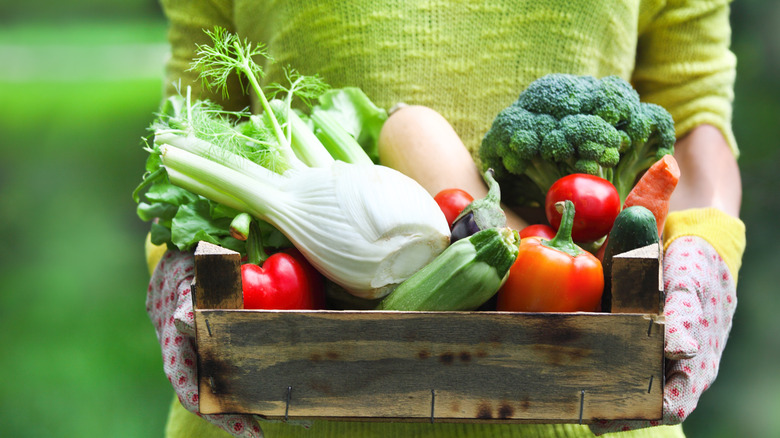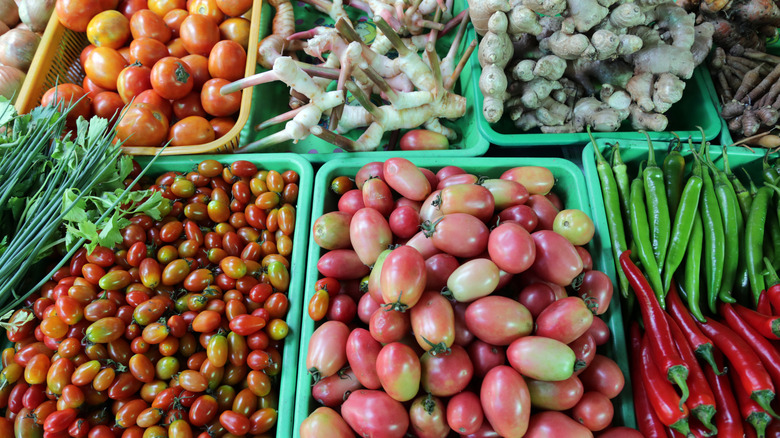Hacks For Cutting Carbs Without The Misery
If you're like most people, you probably have a love-hate relationship with carbs. On the one hand, you have a soft spot for anything starchy or sweet, from piping hot French fries to warm, flaky pastries and let's not even talk about those sinful restaurant bread baskets. But, on the other hand, you can do without the annoying side effects that often accompany any major carb overload — the puffed up mid-section, the crash of energy and, of course, that insatiable craving for more carbs.
"Carbohydrates convert to sugar, so when there's too much in the way of carbs, the sugars get converted to fat and can lead to weight gain," nutritionist Lola Berry explained to me in an interview. The good news is, you can break up with carbs — or at least go on a break — without it being a completely miserable experience.
Here are some pain-free ways to cut out carbs.
Swap pasta for zuchinni noodles
Cutting out carbs doesn't mean having to give up all the food you love. Craving pasta? Registered dietician Abbey Sharp of the blog Abbey's Kitchen suggests swapping your traditional bowl of pasta (which can contain about 40 grams of carbs per serving on average), with spiralized zucchini. "I am obsessed with using zucchini as noodles (zoodles)," she told me. "It's a great way to add fiber and antioxidants while slashing calories and carbs for a lighter summer meal."
Her favorite way to cook them is carbonara-style with salt, garlic, and pancetta. Check out the full recipe here.
Fall in love with cauliflower rice
Growing up in a Latino family, rice has always been one of my go-to side dishes. The only problem, a one-cup serving of cooked rice can run you a whopping 45 grams of carbs! Instead, Sharp suggests swapping your regular bowl of rice at dinner for a low-carb alternative made from cauliflower.
"I love pulsing cauliflower in a food processor until it reaches a fine, rice-like consistency," she told me. "It's a great way to stretch your carb portion and add fiber and cancer-fighting nutrients."
Start the day with protein pancakes
Pancakes are a breakfast staple. While delicious, they don't exactly top the list of low-carb foods. In fact, just one pancake has 19 grams of carbs, according to Fat Secret. That's why when Kara Landau, a registered dietitian in NYC and founder of Travelling Dietitian, is craving a short stack, she opts for a high-protein recipe, instead. "Replace flour in pancakes for a mix of protein powder and pureed pumpkin to create a dense and delicious low-carb breakfast," she told me.
Bake with nut butter and vanilla
Homemade cakes and cookies can be a treat, but most recipes call for sugar, which is a major saboteur of low-carb living. That's why Landau suggests sticking to natural sugar substitutes in your baking. "Bake cookies using a mix of natural nut butter, plant-based protein powders, sweeteners made from prebiotic fibers and sugar-free stevia, plus some vanilla," she told me. "The flavor and texture taste so incredible that you won't even miss the carbohydrates as you bite into the mouth-watering snack!"
Add avocados and coconut oil to your arsenal
Nutrition expert Dr. Carolyn Dean is also a big fan of replacing carbs with healthy fats. Her go-to ingredients: avocado and coconut oil. "Avocado and coconut oils will help keep you feeling full while providing important nutrients," she told me. "Eating avocados is another good way to get your healthy oils."
Go for dark chocolate
A life without cakes, cookies, and pastries does not have to mean a life without indulgent sweets. "Instead of high-carb desserts, start using stevia sweetened dark chocolate or cacao as a healthy treat," Dr. Dean suggests. "Not only is dark chocolate low on carbs, but it is high in magnesium, a mineral that you often lose when you cut back on carbs and that is vital to staying healthy."
Include protein at every meal
Craving a lot of carbs can often be a sign that something else is missing, registered dietician Adina Pearson explained to me in an interview. "Including a good source of protein at meals helps individuals feel more satisfied between meals and helps in fullness in the moment," she said. "Because if all you did was eat less pasta, you wouldn't be getting enough food. Something else needs to fill in the gap and protein does a good job of this. Chicken, fish, meat, tofu, beans, eggs, cottage cheese — all great sources of protein."
Fill up on veggies
Loading up on more vegetables is also a great way to consume less carbs without staying hungry."Vegetables are filling in the short term because they are bulky and fill in the gap when carbs are reduced," said Pearson. She also stresses the importance of filling up on vegetables that you actually enjoy as this will give you a better chance of making long-lasting change.
Stick to whole foods
Even when we think we're making sound choices when it comes to food, the truth is, most of us are probably ingesting way more carbs that we need to be, without even realizing it.
"The best way to first cut back on carbs is by removing all junky and heavily processed convenience products," dietitian and integrative nutritionist Sylvia North of Fearless Nutrition told me. "Most food products found in a packet are usually loaded with some form of sugar, refined starch, industrially processed oil, and salt. By removing these from one's diet in place of minimally processed whole foods, one naturally ends up eating fewer carbs and more healthy fat."
Avoid sugary drinks
From smoothies to sodas, sugary drinks are loaded with carbs. Cutting back on these is one of the simplest and quickest ways to reduce your carb intake, according to Frida Harju, the nutritionist at Lifesum. "I try to avoid sugar-sweetened drinks anyway, but if I am cutting back on carbs then this is something I will definitely not touch," she told me. "Sugar-sweetened drinks contain a lot of carbs, purely because of their sugar content. Rather than have a drink like this, I will have a green tea or a mineral water with lemon."
Track your carbs
If you really want to cut back on carbs, it's probably a good idea to know where your carb intake is coming from. "Get to know your food by counting and tracking how many carbs you're actually eating," North said. "Tracking apps are useful for learning what's really in your food. From there, it's easier to strategically reduce carbs based on your personal data."
Exercise more
Find yourself thinking about carbs way too often? You might just need a little exercise, according to Dr. Rick Braverman, author and founder of PATH Medical Center. "Carb cravings are serotonin cravings," he said. "And carbs relax us."
Dr. Braveman says exercising for one hour a day can help boost serotonin levels and curb cravings.
Get enough sleep
Like exercise, being well-rested also helps us maintain our serotonin levels. If you want to crave fewer carbs, Dr. Braverman says getting enough shut-eye is key. "Sleep, " he said. "At least seven hours per day."
Take a seratonin supplement
If winding down at night feels like a task and regular gym sessions just aren't making you feel relaxed enough to avoid that donut at the office, Dr. Braverman suggests trying out a serotonin supplement to help curb cravings. "Carbs are a self-medicated anti-depressant," he explained. The better we can handle our own everyday anxieties, the less likely we'll feel the need to turn to carbs for comfort.
